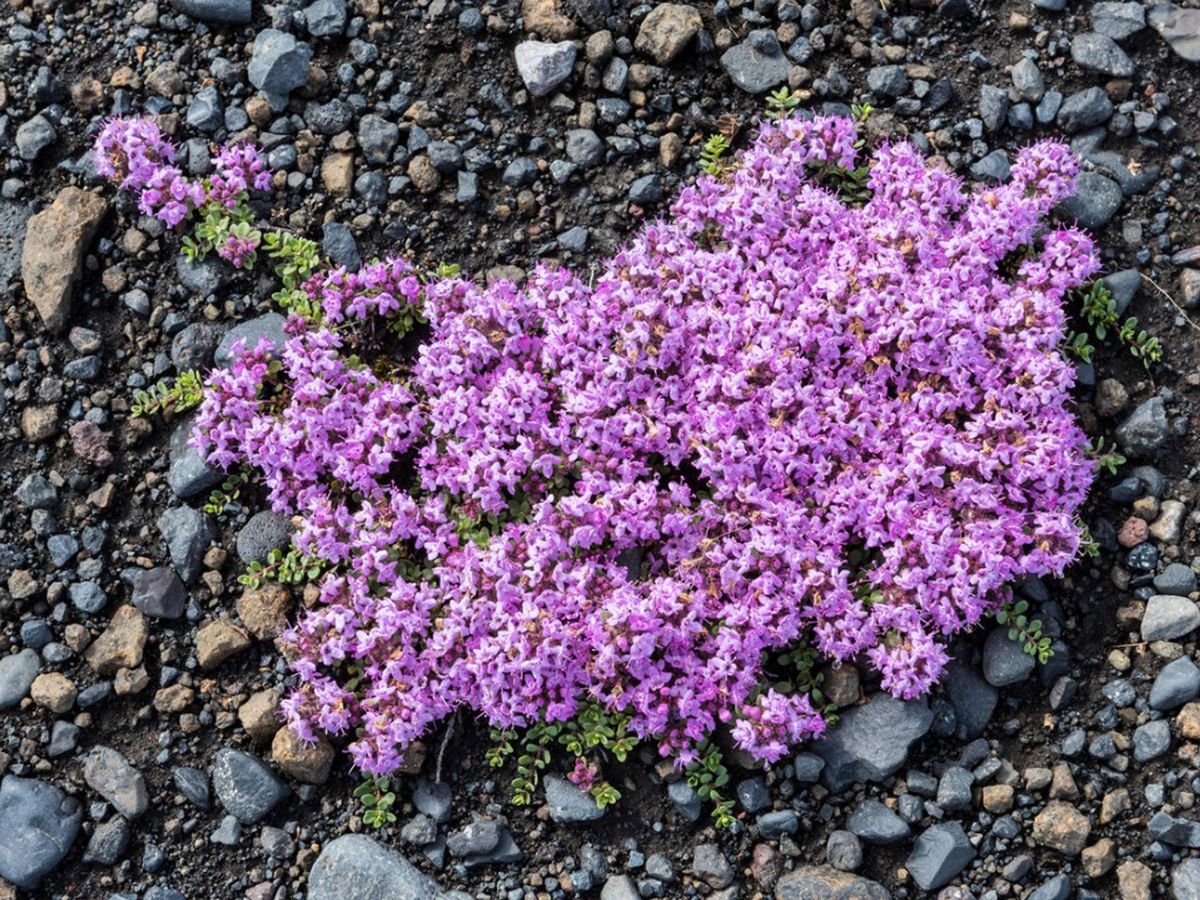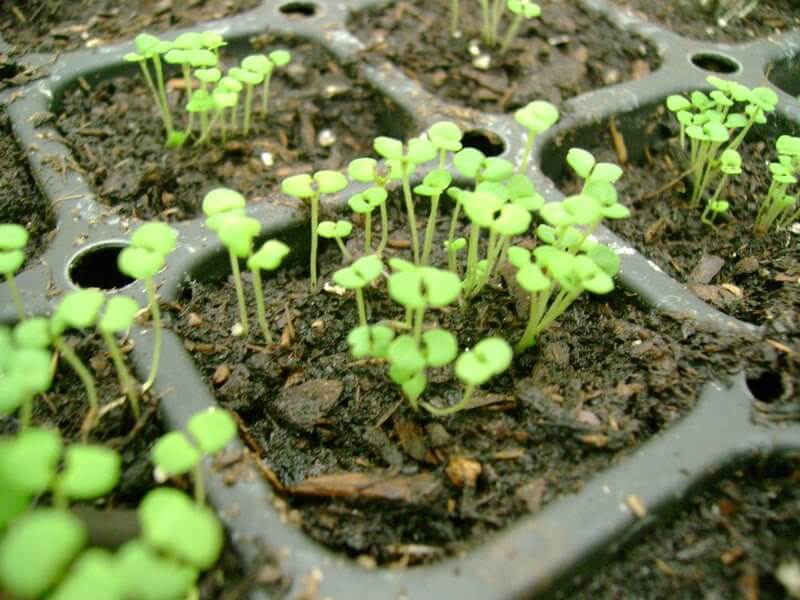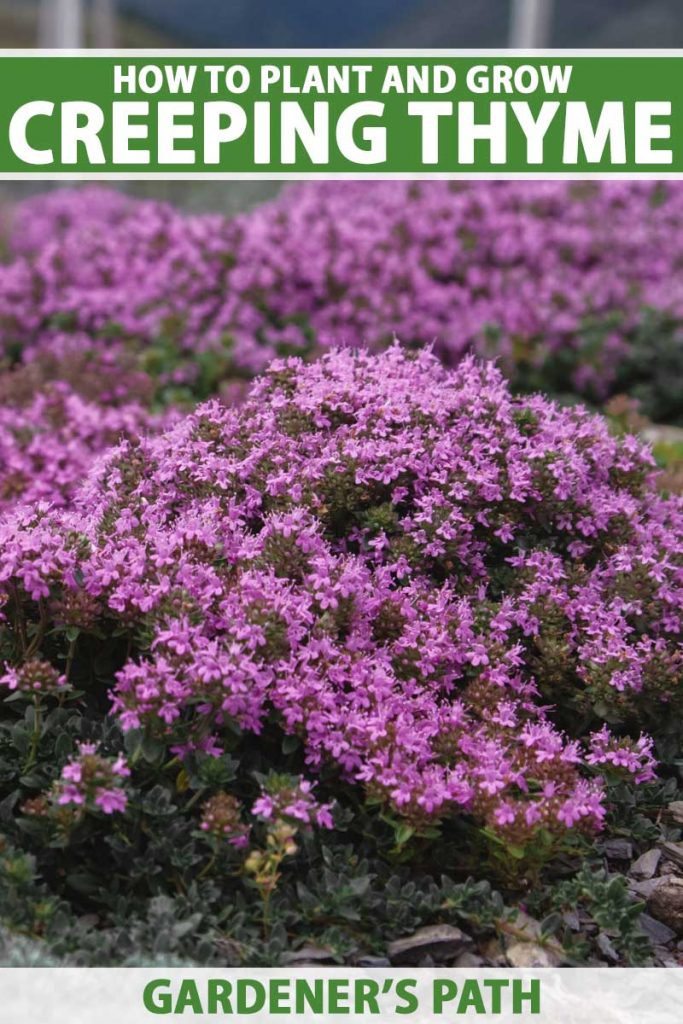Unlocking the Secrets of Successful Thyme Germination
When it comes to planting creeping thyme seeds, proper seed preparation and soil conditions are crucial for optimal germination rates. To ensure the best possible start for your thyme seeds, it’s essential to check seed viability before planting. One way to do this is by performing a simple germination test. Dampen a paper towel, place a few seeds on it, and fold the towel over the seeds. Store the towel in a warm, dark place for 1-2 weeks. If the seeds germinate, they are viable and ready for planting.
In addition to viable seeds, the soil conditions must also be suitable for germination. Creeping thyme prefers well-draining soil with a slightly acidic to neutral pH (around 6.0-7.0). To prepare the soil, start by loosening the top 6-8 inches of soil to improve drainage and aeration. Next, mix in a 2-inch layer of organic matter, such as compost or well-rotted manure, to provide essential nutrients and improve soil structure. If your soil is heavy clay or sandy, consider adding a soil amendment to improve its texture and fertility.
By taking the time to prepare your seeds and soil properly, you’ll be well on your way to successful germination and a healthy crop of creeping thyme. Remember to plant your seeds at the right time, typically in early spring or fall, when the weather is cooler and there is ample moisture in the soil. With proper care and attention, your creeping thyme seeds will germinate and thrive, providing you with a fragrant and flavorful herb for years to come.
For those looking to learn how to plant creeping thyme seeds, it’s essential to understand the importance of proper seed preparation and soil conditions. By following these simple steps, you’ll be able to give your thyme seeds the best possible start and enjoy a bountiful harvest of this versatile and delicious herb.
Choosing the Right Location for Your Creeping Thyme
When it comes to planting creeping thyme seeds, selecting the right location is crucial for optimal growth and success. Creeping thyme requires a location that receives full sun to partial shade, with at least 4-6 hours of direct sunlight per day. This will help promote healthy growth and prevent the plant from becoming leggy or weak.
In addition to sunlight, creeping thyme also requires good air circulation to prevent fungal diseases and promote healthy growth. Choose a location that is well-ventilated and has good air movement, such as a spot near a fence or a wall that receives gentle breezes.
Soil requirements are also important when choosing a location for creeping thyme. This herb prefers well-draining soil that is rich in organic matter, with a slightly acidic to neutral pH (around 6.0-7.0). Avoid planting in areas with standing water or where water tends to collect, as this can lead to root rot and other problems.
When selecting a location for your creeping thyme, also consider the temperature requirements of the plant. Creeping thyme prefers temperatures between 65-75°F (18-24°C), making it an ideal choice for gardens in USDA zones 4-9. Avoid planting in areas with extreme temperatures, as this can affect the plant’s growth and survival.
By choosing the right location for your creeping thyme, you’ll be able to provide the optimal conditions for growth and success. Remember to consider factors such as sunlight, air circulation, soil requirements, and temperature when selecting a location for your creeping thyme seeds. With the right conditions, you’ll be able to enjoy a healthy and thriving crop of this versatile and delicious herb.
Preparing the Soil for Creeping Thyme Seed Planting
Soil preparation is a critical step in the process of how to plant creeping thyme seeds. Creeping thyme requires a well-draining soil with a slightly acidic to neutral pH (around 6.0-7.0) to thrive. To achieve this, it’s essential to test the soil pH and adjust it if necessary. You can purchase a soil testing kit or send a sample to a lab for analysis.
Once you have determined the soil pH, you can take steps to adjust it if necessary. If the soil is too acidic, you can add lime to raise the pH. If the soil is too alkaline, you can add elemental sulfur or aluminum sulfate to lower the pH. It’s also important to note that creeping thyme prefers a soil with a moderate level of nutrients. You can add organic matter such as compost or well-rotted manure to improve soil fertility.
In addition to adjusting the soil pH and adding organic matter, it’s also important to ensure that the soil is well-draining. Creeping thyme does not like wet feet, so it’s essential to avoid planting in areas with standing water or where water tends to collect. You can improve soil drainage by adding perlite, vermiculite, or sand to the soil.
By preparing the soil properly, you can create an optimal environment for your creeping thyme seeds to germinate and grow. Remember to test the soil pH, adjust it if necessary, and add organic matter to improve soil fertility. With proper soil preparation, you’ll be well on your way to growing a healthy and thriving crop of creeping thyme.
When learning how to plant creeping thyme seeds, it’s essential to understand the importance of soil preparation. By taking the time to prepare the soil properly, you can ensure that your creeping thyme seeds have the best possible start in life. With proper care and attention, your creeping thyme will thrive and provide you with a bountiful harvest of this versatile and delicious herb.
Sowing Creeping Thyme Seeds: A Step-by-Step Guide
Now that you have prepared the soil and chosen the right location for your creeping thyme, it’s time to sow the seeds. Sowing creeping thyme seeds is a relatively straightforward process, but it does require some care and attention to detail. Here’s a step-by-step guide to help you get started:
Step 1: Prepare the Seed Starting Mix
Fill a seed starting tray or small pots with a good quality seed starting mix. Moisten the mix with water, but make sure it’s not too wet or dry.
Step 2: Sow the Seeds
Place one or two creeping thyme seeds in each cell or pot, depending on the size of the container. Cover the seeds with a thin layer of the seed starting mix. The seeds should be sown on the surface of the mix, as they require light to germinate.
Step 3: Water the Seeds
Water the seeds gently but thoroughly. Make sure the mix is moist but not waterlogged. Keep the mix consistently moist during the germination period, which can take anywhere from 7-14 days.
Step 4: Provide Adequate Light and Temperature
Place the seed starting tray or pots in a location that receives bright, indirect light. The ideal temperature for germination is between 65-75°F (18-24°C). Avoid placing the seeds in direct sunlight, as this can cause the mix to dry out too quickly.
By following these steps, you should be able to successfully sow your creeping thyme seeds. Remember to keep the mix consistently moist and provide adequate light and temperature for optimal germination. With proper care and attention, your creeping thyme seeds should germinate and grow into healthy, thriving plants.
When learning how to plant creeping thyme seeds, it’s essential to understand the importance of proper sowing techniques. By following these steps, you can ensure that your seeds have the best possible start in life. With proper care and attention, your creeping thyme will thrive and provide you with a bountiful harvest of this versatile and delicious herb.
Providing Optimal Care for Germinating Creeping Thyme Seeds
Once your creeping thyme seeds have germinated, it’s essential to provide them with optimal care to ensure healthy growth and development. One of the most critical factors in caring for germinating seeds is maintaining consistent moisture levels. Creeping thyme seeds require a consistently moist environment to germinate and grow, but overwatering can be detrimental to their health.
To prevent overwatering, make sure to water your creeping thyme seeds gently but thoroughly. Check the soil daily, and only water when the top inch of soil feels dry to the touch. It’s also essential to provide adequate light for germinating seeds. Creeping thyme seeds require bright, indirect light to germinate and grow, so make sure to place them in a location that receives plenty of natural light.
In addition to maintaining consistent moisture levels and providing adequate light, it’s also essential to prevent common problems such as fungal diseases. Fungal diseases can be a significant issue for creeping thyme seeds, especially in humid or waterlogged environments. To prevent fungal diseases, make sure to provide good air circulation around your seeds, and avoid overwatering.
By providing optimal care for your germinating creeping thyme seeds, you can ensure healthy growth and development. Remember to maintain consistent moisture levels, provide adequate light, and prevent common problems such as fungal diseases. With proper care and attention, your creeping thyme seeds will thrive and provide you with a bountiful harvest of this versatile and delicious herb.
When learning how to plant creeping thyme seeds, it’s essential to understand the importance of providing optimal care for germinating seeds. By following these tips, you can ensure that your seeds have the best possible start in life. With proper care and attention, your creeping thyme will thrive and provide you with a bountiful harvest of this versatile and delicious herb.
Thinning and Transplanting Creeping Thyme Seedlings
Once your creeping thyme seeds have germinated and grown into seedlings, it’s essential to thin them out to prevent overcrowding and promote healthy growth. Thinning involves removing some of the seedlings to give the remaining ones more space to grow. This process is crucial for the development of strong and healthy creeping thyme plants.
To thin your creeping thyme seedlings, start by selecting the strongest and healthiest seedlings. Remove any weak or spindly seedlings, and make sure to leave about 1-2 inches of space between each remaining seedling. This will give them enough room to grow and receive adequate light and air circulation.
After thinning your creeping thyme seedlings, you can transplant them into individual pots or into the garden. When transplanting, make sure to handle the seedlings carefully to avoid damaging their roots. Dig a hole that is slightly larger than the pot, and gently place the seedling in the hole. Fill in the hole with soil, and water well to settle the soil.
When transplanting creeping thyme seedlings into the garden, make sure to choose a location that receives full sun to partial shade and has well-draining soil. Creeping thyme prefers a slightly acidic to neutral soil pH, so make sure to test the soil pH before transplanting. With proper care and attention, your creeping thyme seedlings will thrive and provide you with a bountiful harvest of this versatile and delicious herb.
When learning how to plant creeping thyme seeds, it’s essential to understand the importance of thinning and transplanting seedlings. By following these steps, you can ensure that your seedlings have the best possible start in life. With proper care and attention, your creeping thyme will thrive and provide you with a bountiful harvest of this versatile and delicious herb.
Common Challenges and Solutions for Growing Creeping Thyme from Seed
When growing creeping thyme from seed, there are several common challenges that may arise. One of the most common challenges is poor germination rates. This can be caused by a variety of factors, including old or low-quality seeds, inadequate soil preparation, and insufficient light or water.
To overcome poor germination rates, make sure to use fresh and high-quality seeds, and follow the proper soil preparation and sowing instructions. Additionally, ensure that the soil is consistently moist and that the seeds receive adequate light and warmth.
Another common challenge when growing creeping thyme from seed is pest infestations. Creeping thyme is susceptible to pests such as aphids, whiteflies, and spider mites. To prevent pest infestations, make sure to keep the soil and plants clean, and avoid overwatering. Regularly inspect the plants for signs of pests, and use organic or chemical controls as needed.
Fungal diseases are also a common challenge when growing creeping thyme from seed. Fungal diseases can be caused by overwatering, poor air circulation, and high humidity. To prevent fungal diseases, make sure to provide good air circulation around the plants, and avoid overwatering. Regularly inspect the plants for signs of fungal diseases, and use organic or chemical controls as needed.
By being aware of these common challenges and taking steps to prevent them, you can successfully grow creeping thyme from seed. Remember to use fresh and high-quality seeds, follow proper soil preparation and sowing instructions, and provide adequate light, water, and air circulation. With proper care and attention, your creeping thyme will thrive and provide you with a bountiful harvest of this versatile and delicious herb.
When learning how to plant creeping thyme seeds, it’s essential to understand the common challenges that may arise and how to overcome them. By following these tips and taking steps to prevent common challenges, you can ensure a successful harvest of creeping thyme.
Harvesting and Enjoying Your Homegrown Creeping Thyme
Once your creeping thyme has reached maturity, it’s time to harvest and enjoy the fruits of your labor. Creeping thyme is a versatile herb that can be used in a variety of dishes, from soups and stews to salads and sauces.
To harvest creeping thyme, simply pinch or cut off the tips of the stems, leaving about an inch of stem intact. This will encourage the plant to produce new growth and prevent it from flowering. You can also harvest the leaves and stems by cutting them off at the base of the plant, just above a node.
Creeping thyme can be used fresh or dried for later use. To dry creeping thyme, tie the stems in small bunches and hang them upside down in a warm, dry place. Once the thyme is dry, you can store it in airtight containers for up to six months.
Creeping thyme has a number of culinary and medicinal uses. It can be used to add flavor to soups, stews, and sauces, and can also be used as a garnish for salads and other dishes. Creeping thyme has also been used for centuries to treat a variety of health conditions, including digestive issues and respiratory problems.
When learning how to plant creeping thyme seeds, it’s essential to understand the importance of harvesting and using the herb. By following these tips, you can enjoy the many benefits of homegrown creeping thyme and add a new dimension to your cooking and herbal remedies.
With its versatility, flavor, and medicinal properties, creeping thyme is a great addition to any garden or kitchen. By mastering the art of planting creeping thyme from seed, you can enjoy a bountiful harvest of this delicious and useful herb.








/red-creeping-thyme-flowering-big-56a585ab3df78cf77288b00e.jpg)